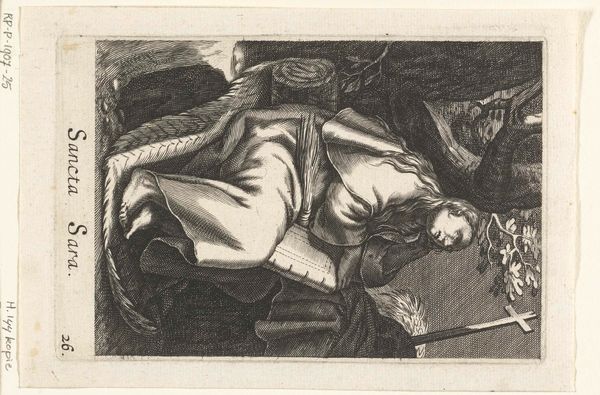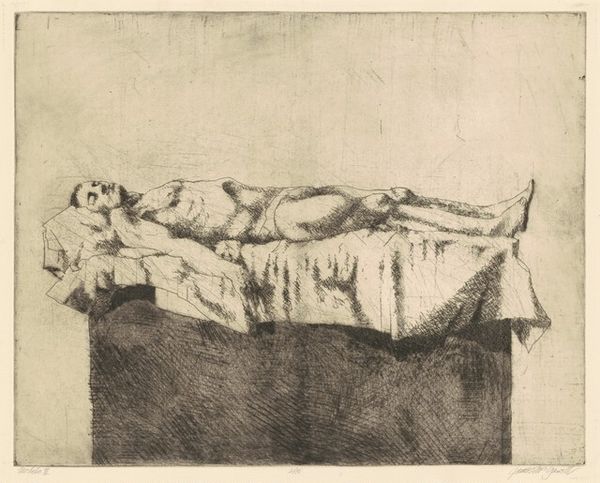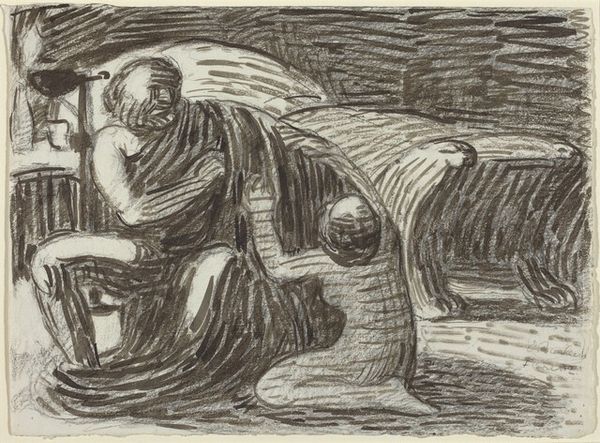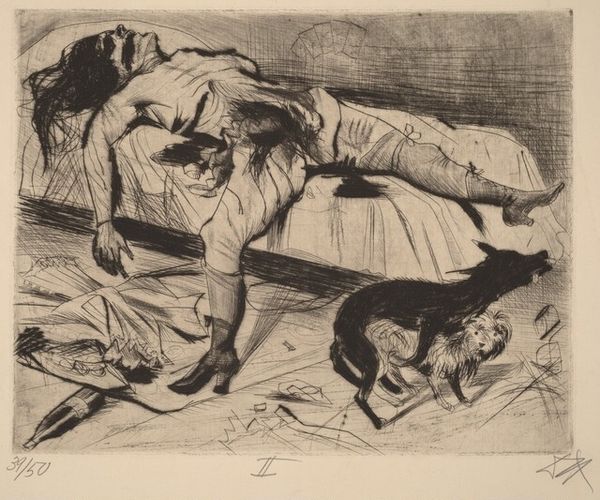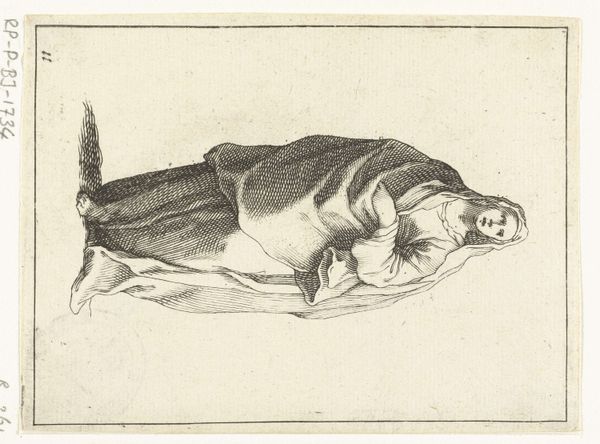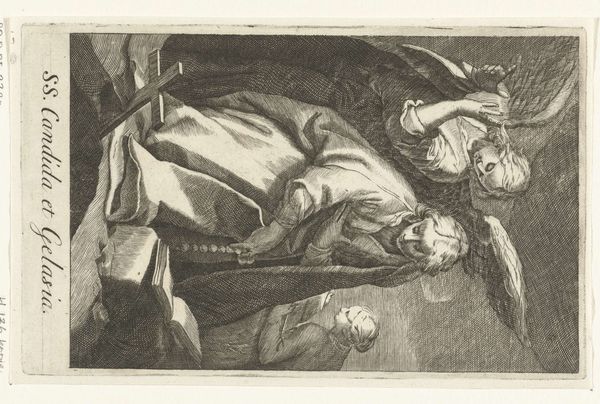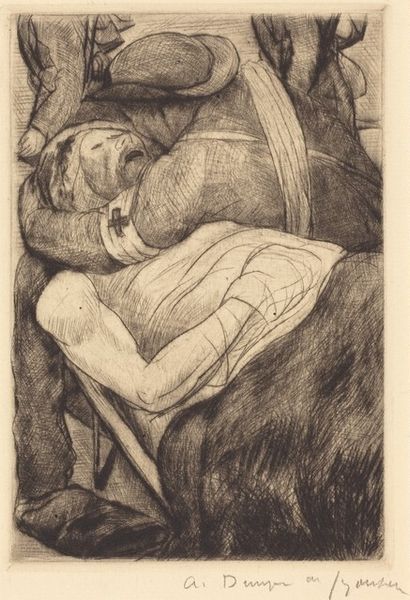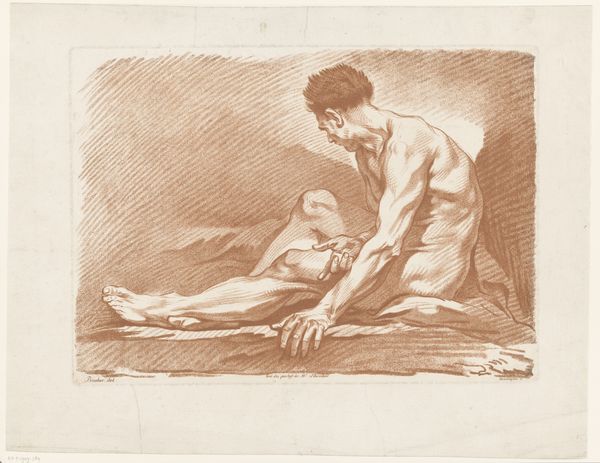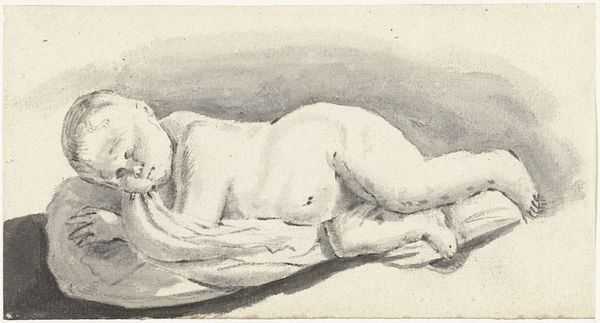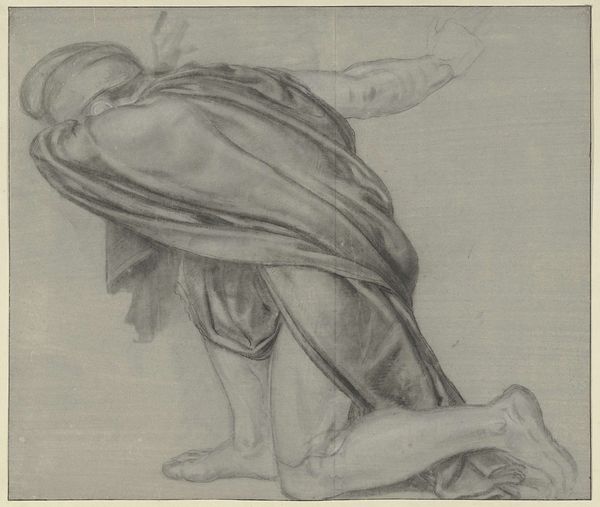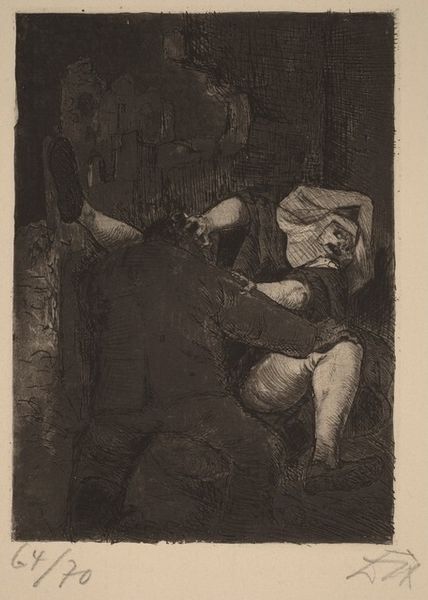
drawing, print, pencil, graphite
#
portrait
#
pencil drawn
#
drawing
# print
#
pencil sketch
#
pencil drawing
#
pencil
#
graphite
#
portrait drawing
#
genre-painting
#
realism
Dimensions: image: 230 x 434 mm sheet: 279 x 438 mm
Copyright: National Gallery of Art: CC0 1.0
Curator: Here we have Daniel Ralph Celentano's "Desperate," a pencil and graphite drawing from approximately 1946. What stands out to you as you view it? Editor: The immediate impact is visceral. The figure, sprawled and contorted on what appears to be a bed, exudes a sense of utter defeat. The stark graphite rendering amplifies the raw emotion, there is almost a claustrophobic feel here. Curator: Yes, Celentano seems to be channeling the anxieties of postwar America. His subjects, so often working-class figures, reveal both physical and emotional toil, reflecting anxieties surrounding labor and societal shifts. It’s also notable as a print, a readily reproducible medium intended to disseminate images broadly. Editor: Definitely. Looking closer, you can see the economic precariousness etched in the details – the sparse room, the very posture of the man suggesting collapse under immense pressure. There is also something about his clasped hands behind the head that feels both vulnerable and tense, embodying that sense of despair. He is almost trying to protect himself. Curator: I agree. Consider the historical moment. The work comes shortly after the war, yet rather than celebrating victory or renewed prosperity, it depicts individual crisis. This suggests Celentano's commentary extends to a critique of systems failing ordinary people even in supposedly better times. Editor: The way Celentano uses light and shadow, there’s no relief, no soft edges. The sharp contrast almost implies moral judgment, although empathy undeniably permeates his rendering of the man's posture. The washbasin adds to the vulnerability: all our hidden private ablutions exposed to the world. The entire image reads like a call to acknowledge, and address, the realities of overlooked suffering. Curator: Ultimately, "Desperate" compels us to consider whose stories and which experiences are deemed worthy of representation. By choosing working-class suffering as a theme during this period, Celentano highlights the dissonance between dominant narratives of progress and the lived realities of many. Editor: Absolutely. For me, it is also a challenge, even now. The drawing reminds us to confront the ongoing structural inequities and the emotional burdens they create, making art both a mirror to history and a motivator for change.
Comments
No comments
Be the first to comment and join the conversation on the ultimate creative platform.
